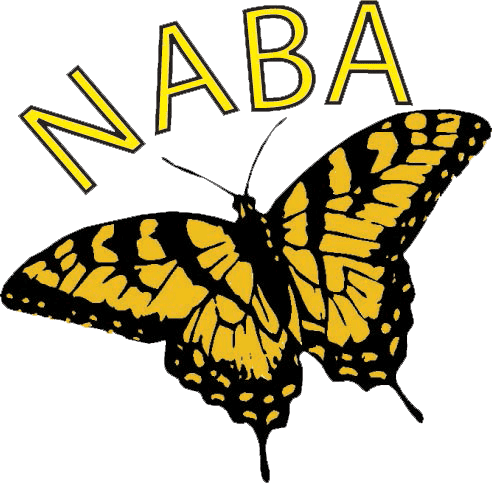![]()
The following article originally appeared in Butterfly Gardener, a NABA publication for members. It originally appeared in Vol 12: No.3, Fall 2007. NABA member Lenora Larson has graciously allowed us to reprint it here.
Host Plant: Spicebush
By Lenora Larson
We Butterfly Gardeners live in a field of dreams. It is the triumph of hope over reality to believe that if we plant it, they will come. My experience with Spicebush, Lindera benzoin, proves that it is true for the patient gardener.
I launched my career as a butterfly grandmother in 1990 with the purchase of a butterfly field guide. Naively, I bookmarked all the Kansas residents and set vigil that first summer. Many beauties did find me, but many of the expected species were missing. Further study taught me that flowers are not enough; specific caterpillar food sources are necessary.
If I wanted the shimmering Spicebush Swallowtail, Pterourus troilus, I must provide the Spicebush and so began the search. This was 1991, before the Internet became the shopper’s paradise and before the movement back to native plants. Two years of searching catalogs and telephoning nurseries finally located a mail-order source in Wisconsin. I began with six plants, knowing that even though Spicebush is native to Eastern Kansas, re-location to our soil and climate is never easy.
Hardy to zone 4, Spicebush is a multi-branched shrub that grows to 12 feet in moist deciduous forest under stories and stream banks. Spicebush adapts throughout eastern United States, ranging from the east coast, west to Kansas and Texas, as far north as Ontario and south to the keys. The closely related Lindera mellissaefolium lives in the swamps of Florida and Louisiana. Another member of the Laurel family, Sassifrass, is also a Spicebush Swallowtail host, but I’ve not had luck in transplanting this small tree to my garden.
Crush a leaf, and a faint whiff of benzene will transport you back to high school chemistry class. The dried leaves and twigs can be brewed into a lovely spicy tea. Spicebushes are dioecious, so you’ll want at least one boy and one girl plant to produce the brilliant red berries much relished by the birds. The fragrant yellow flowers are harbingers of spring before the leaves emerge. In the northern woods it is called “Wild Forsythia”, but these must be people desperate for spring, because the color and flower density are far more subtle than the exuberant Forsythia. Summer’s foliage is a light green leaf, followed by bright yellow fall color.
Best of all, this is a well-behaved shrub with no suckering and no seed-sprouting. If a bush becomes too lanky, it can be stooled (cut back) in early spring at the same time as you whack your Buddleia. With no pests or diseases, the shrub is a worthy care-free specimen or hedge in any garden. Birds will beat you to the seeds, but propagation is possible from softwood cuttings.
My Spicebushes were lovely, but for 13 years, I did not see the butterfly. Finally, in 2007, persistence paid off; the daily late spring patrol of my 3 bushes was successful with the first sighting of the sensational caterpillars, well-worth the hunt. The first clue is a leaf half-rolled over as a shelter for the larvae. By the fifth instar, the 2” green caterpillar has 4 large eyespots. When it flicks the orange osmaterium, its snake-like appearance deters predators and scares small children.
Like many other species of swallowtails, these adults indulge in mimicry. The female’s black and blue wings impersonate the black and blue of the poisonous Pipevine Swallowtail butterfly. The male’s wings shimmer with an emerald green blush against the black background.
Patience is indeed a virtue and has been well-rewarded. By summer’s end I had seen 27 fifth instar caterpillars with timing indicating at least three broods. Already I anticipate the successful hunt next spring in my field of dreams.
